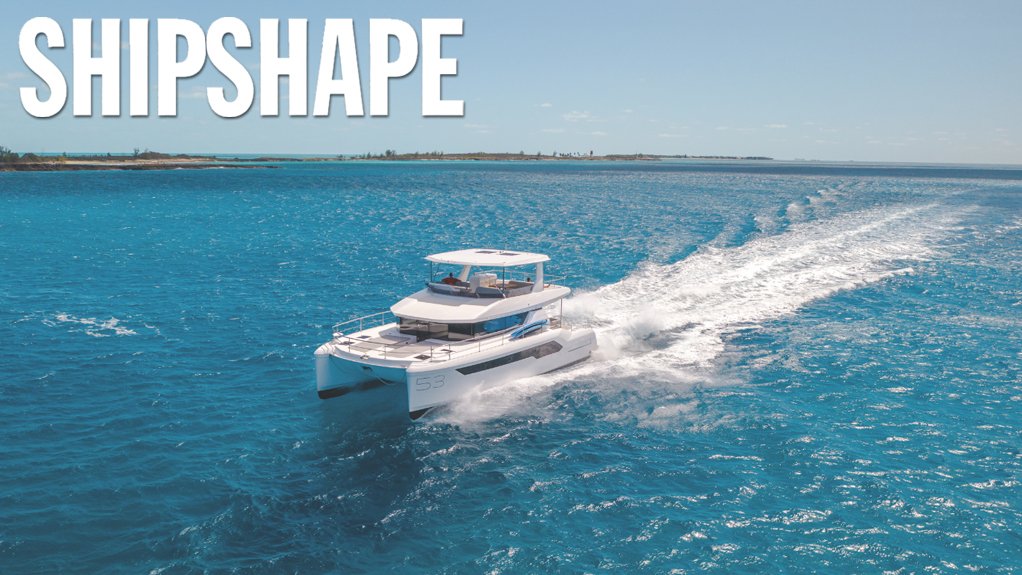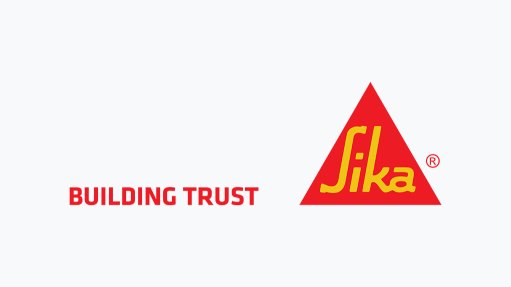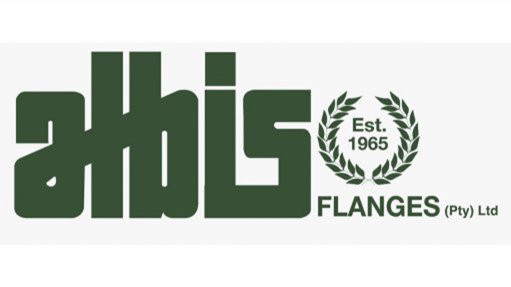SA’s largest boat builder eyes growing share of global ocean-cruising catamaran market
It’s easy to overlook the sheer magnitude of Robertson and Caine’s (R&C’s) operations in Cape Town. The company’s ten boat-building factories and assembly lines are dotted across the city – from Woodstock to Paarden Island to Montagu Gardens, with the latter also housing a substantial warehouse.
Other numbers, however, make it easier to appreciate the scale of the catamaran builder, including the fact that the 33-year-old company employs more than 2 400 people, with one boat rolling off an assembly line somewhere in the city almost every weekday of the year.
For this year, that will be more than 200 catamarans.
R&C is South Africa’s largest boat builder for the export market, the largest builder of ocean cruising catamarans in the southern hemisphere and one of the top three in the world, with the French its biggest competition.
A catamaran can either be powered by sail and a small engine, or by more powerful engines alone.
MD Theo Loock is perhaps proudest of its most recent accolade – the 2024 European Powerboat of the Year award for the Leopard 40 PC in the powerboat category.
New Ownership
R&C is Loock’s fourth turn at the helm of a company, following 15 years as the boss of JSE-listed energy storage and automotive component manufacturer Metair.
He retired at Metair in 2020, joining R&C in 2021, following a request to do so from asset manager CapitalWorks.
R&C was founded in 1991 by John Robertson and the late Jerry Caine, reaching a new scale of operations when CapitalWorks joined the business as a strategic equity partner.
Loock’s brief as the new CEO included overseeing the sale of the business and facilitating Robertson’s retirement last year. (John’s son, Michael Robertson, remains at the company as design manager.)
Today, R&C is owned by Vox Ventures, a subsidiary of PPF Group, an international diversified investment firm in Europe, with its roots in the Czech Republic.
The new owners have a singular ambition for R&C – that it continues to expand globally while remaining based in Cape Town.
Small Beginnings
Before Robertson and Caine started the company, Robertson built monohulls – including one used by South Africa’s champion sailor Hanno Teuteberg to win the Cape to Rio race in 1993.
This gold medal attracted the attention of charter companies in the US, which asked Robertson if he didn’t want to consider building catamarans.
Multihulled catamarans offer more stability on the water than monohulls, which means they are better suited to tourist activities.
“The charter market is all about comfort,” notes Loock, quipping: “You don’t want the children sliding off the deck.”
Robertson accepted an order for ten catamarans, ultimately leading to the birth of R&C.
Today, R&C’s product line-up includes sailing catamarans (42 ft, 45 ft and 50 ft) and power catamarans (40 ft, 46 ft and 53 ft).
“We have a good balance, with around 60% in sailing and 40% in power,” says Loock.
More than 99% of R&C’s boats find their way overseas; more specifically, the US East Coast, the Caribbean, Seychelles, Mediterranean, Asia, South Pacific and South America.
Covid-19 provided a noticeable sales boost, as customers with healthier bank balances found that they could isolate from the pandemic on boats in some of the most beautiful parts of the world, says Loock.
R&C’s boats are handed over to the customer in the Cape Town harbour, where they undergo their final commissioning checks before either being sailed off by the owner or transported by freighter to their final destination.
If you ever want to see R&C’s boats make their trek to water, get up between 02:00 and 04:00 when they are transported to the Cape Town harbour on specialised trucks and under metro police escort.
In essence, every boat sold by R&C is a Leopard-branded catamaran. However, they are only branded as such should a private owner acquire one. If they go to charter companies, they are sold under the Sunsail or Moorings brands.
“With our boats you have a product that offers space and comfort, performance and seaworthiness, but one that is also fairly affordable. We balance on those three points – the triangular maximus,” explains Loock.
“We don’t want to be the cheapest, or the biggest, or the fastest. For us, it is about balance.”
R&C doesn’t build custom boats. The company focuses on series production, but with the flexibility to allow customers some options in terms of the triangular maximus.
“Our distribution partner tells us what they need within the triangular maximus, and we then do the boat design in a collaborate fashion,” adds technical and industrialisation director Donovan Thomas, who migrated from the automotive industry to R&C in 2017.
“From our initial discussion with our distribution partner, it takes about 18 months to progress from concept to first prototype.
“We manufacture our own moulds and tooling. Our boat-building process is a very labour-intensive process, with little opportunity for automation.”
Handmade, Full in-House Design
“Some people consider our methods old- fashioned,” says Thomas.
“Yes, we do most things by hand, but our accuracy and speed are excellent. On toolmaking for the 53-ft model, we achieve a tolerance of 2 mm on the total length of the boat.”
R&C does, however, make use of computer numerical control technology, especially in the joinery workshop.
“We have a team of more than 40 engineers and we are one of the largest users of Solidworks in Southern Africa,” explains Thomas.
“We do the full design of the boat from structure to systems, and we also make use of advanced finite element analysis when designing load-carrying jigs,”
However, the actual boat-building process at R&C still happens by hand.
The catamarans are built from fibreglass and resin, with a foam component to reduce structure density.
R&C will take in 145 composite trainees this year.
Last year the company had 169 trainees – employees’ children – with 127 of those now employed at R&C.
“The rest of the boat is mostly carpentry work for the kitchens, cockpit, galleys, heads (bathrooms) and cabins,” says R&C head of manufacturing Andries Erwee.
“We use a specially sealed marine ply that we press and upgrade ourselves. Then we also have to manage all the electrical and mechanical components that go into a catamaran.”
Erwee spent 25 years producing steel at Newcastle, in KwaZulu-Natal.
“A boat is basically a house on water,” says Loock. “It must have its own clean and grey water systems, as well as navigation systems. It also needs electricity, so we must also employ carpenters, plumbers and electricians.”
Local material content on any R&C catamaran is about 50% by value.
However, all the systems on the boat must be of such a nature that they can be serviced and maintained abroad, which sometimes limits the use of local products, notes Erwee.
“We still build a wooden replica before we enter the final design phase,” adds Loock.
“This is where we sit at the table, lie on the bed and move in behind the wheel to test the space and interconnectivity – the flow between all the parts of the boat. We mimic all possible scenarios for people using our boats.”
In the end, any boat-building process is heavily influenced by what Loock calls CATS – connectivity, autonomous sailing, thrust technology and, finally, shared ownership and sustainability.
Connectivity means exactly what it says: the owner, the boat and the outside world must be tethered at all times.
Autonomous sailing – autopilot – allows the operator to leave the wheel unattended for a while.
Thrust technology refers to whatever powers the boat, be it an internal combustion engine, electric propulsion or wind.
Shared ownership allows someone to own a boat through Moorings or Sunsail, but to then lease it to the charter market.
“This means owners are able to use the boat for a few weeks a year when it suits them,” says Loock. “It also means they don’t have to maintain the boat or pay the marina fees.”
New Owners, New Goals
“We believe we have the potential to create many more jobs in Cape Town,” says Loock. “We want to grow and grow exponentially.”
However, all of R&C’s factories are currently running at 100% capacity.
“To grow, we would need new factories, more employees and new products – we have to do all three,” says Loock.
One project to achieve this is the localisation of some of the imported products on R&C’s boat line-up.
Article Enquiry
Email Article
Save Article
Feedback
To advertise email advertising@creamermedia.co.za or click here
Comments
Announcements
What's On
Subscribe to improve your user experience...
Option 1 (equivalent of R125 a month):
Receive a weekly copy of Creamer Media's Engineering News & Mining Weekly magazine
(print copy for those in South Africa and e-magazine for those outside of South Africa)
Receive daily email newsletters
Access to full search results
Access archive of magazine back copies
Access to Projects in Progress
Access to ONE Research Report of your choice in PDF format
Option 2 (equivalent of R375 a month):
All benefits from Option 1
PLUS
Access to Creamer Media's Research Channel Africa for ALL Research Reports, in PDF format, on various industrial and mining sectors
including Electricity; Water; Energy Transition; Hydrogen; Roads, Rail and Ports; Coal; Gold; Platinum; Battery Metals; etc.
Already a subscriber?
Forgotten your password?
Receive weekly copy of Creamer Media's Engineering News & Mining Weekly magazine (print copy for those in South Africa and e-magazine for those outside of South Africa)
➕
Recieve daily email newsletters
➕
Access to full search results
➕
Access archive of magazine back copies
➕
Access to Projects in Progress
➕
Access to ONE Research Report of your choice in PDF format
RESEARCH CHANNEL AFRICA
R4500 (equivalent of R375 a month)
SUBSCRIBEAll benefits from Option 1
➕
Access to Creamer Media's Research Channel Africa for ALL Research Reports on various industrial and mining sectors, in PDF format, including on:
Electricity
➕
Water
➕
Energy Transition
➕
Hydrogen
➕
Roads, Rail and Ports
➕
Coal
➕
Gold
➕
Platinum
➕
Battery Metals
➕
etc.
Receive all benefits from Option 1 or Option 2 delivered to numerous people at your company
➕
Multiple User names and Passwords for simultaneous log-ins
➕
Intranet integration access to all in your organisation

















